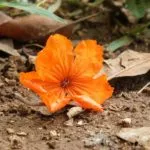Knowing how to treat your soil can be tricky considering how many different types there are. They all need to be worked differently, meaning that it is important to make sure that you understand the properties of your soil and how to make it work for your gardening projects.
We have put together a list of the six most common soils for you to compare to yours, ensuring you make the most of your garden.
Chalky Soil.
Chalky soil is alkaline, stony and free draining, as it often lays over layers of of chalk. Minerals such as iron and manganese will quickly leach out of the soil, but this can be fixed to an extent by regularly adding fertiliser.
Clay Soil.
Clay soil warms up slowly in the spring and goes hard and cracks when dry, draining poorly. Although it is hard to dig, it’s very high in nutrients. It feels lumpy and slimy and sticky when wet. It rolls up into a ball easily and stays in shape.
Loamy Soil.
Loam is the perfect soil type, as it is easy to work and not too free draining or prone to water logging. It is full of nutrients and warms up quickly in spring. Loam is made up of a combination of clay, sand and silt, which each have differently sized soil particles. this gives the soil and open structure, allowing air to circulate between the particles, keeping it healthy. If squeezed, loam holds together but doesn’t stick together like clay.
Peaty Soil.
Soils containing lots of peat are acidic and high in organic matter, but low in nutrients. A peaty soil holds plenty of water and can get waterlogged. Peaty soil is dark in colour and can feel spongy. It is rarely found in gardens and lacks nutrients.
Sandy Soil.
Sandy soil is free draining, easy to work and warms up quickly in the spring. however it drys out rapidly and and leaches nutrients when it rains, so it needs plenty of organic mattering to help it retain moisture and feed the plants. It’s gritty to touch and made up of larger soil particles than silty or clay soil.
Silty Soil.
Silty soil is made from quite fine particles, so is free draining but also retains moisture. It’s higher in nutrients than sandy soil. It can get compacted easily. Silty soil is smooth to the touch. It rolls into a ball easily by doesn’t hold it’s shape as well as clay.


